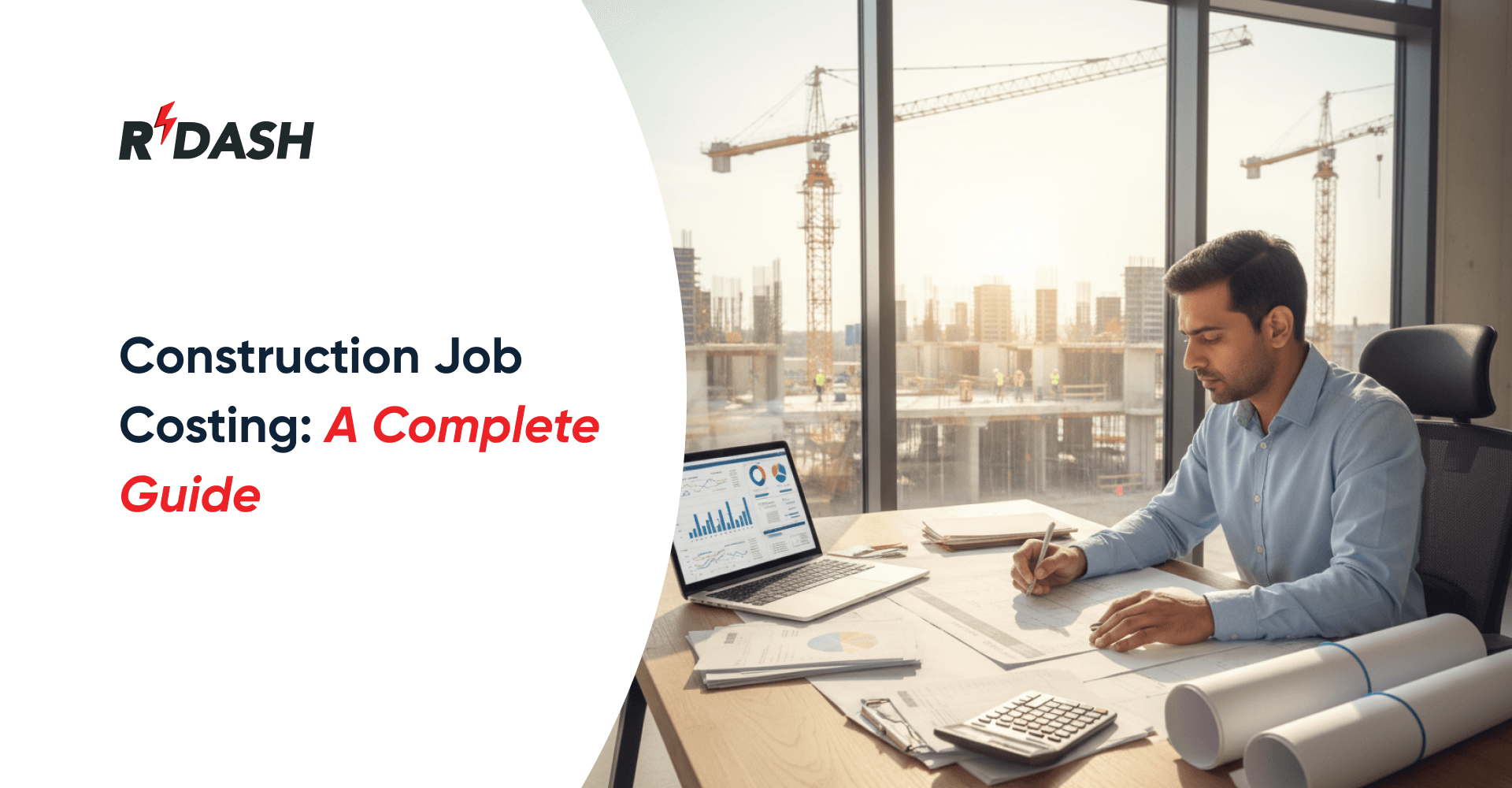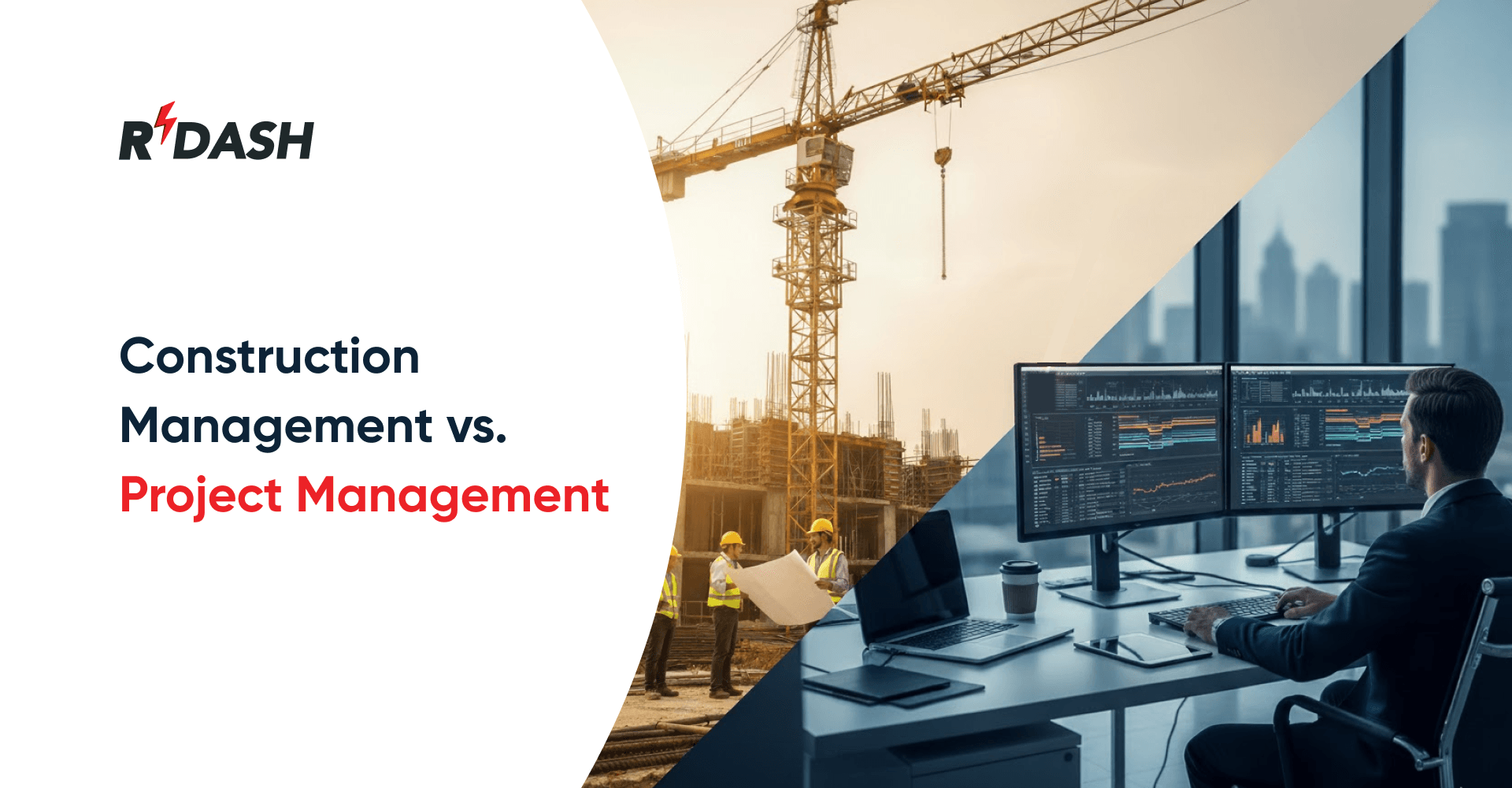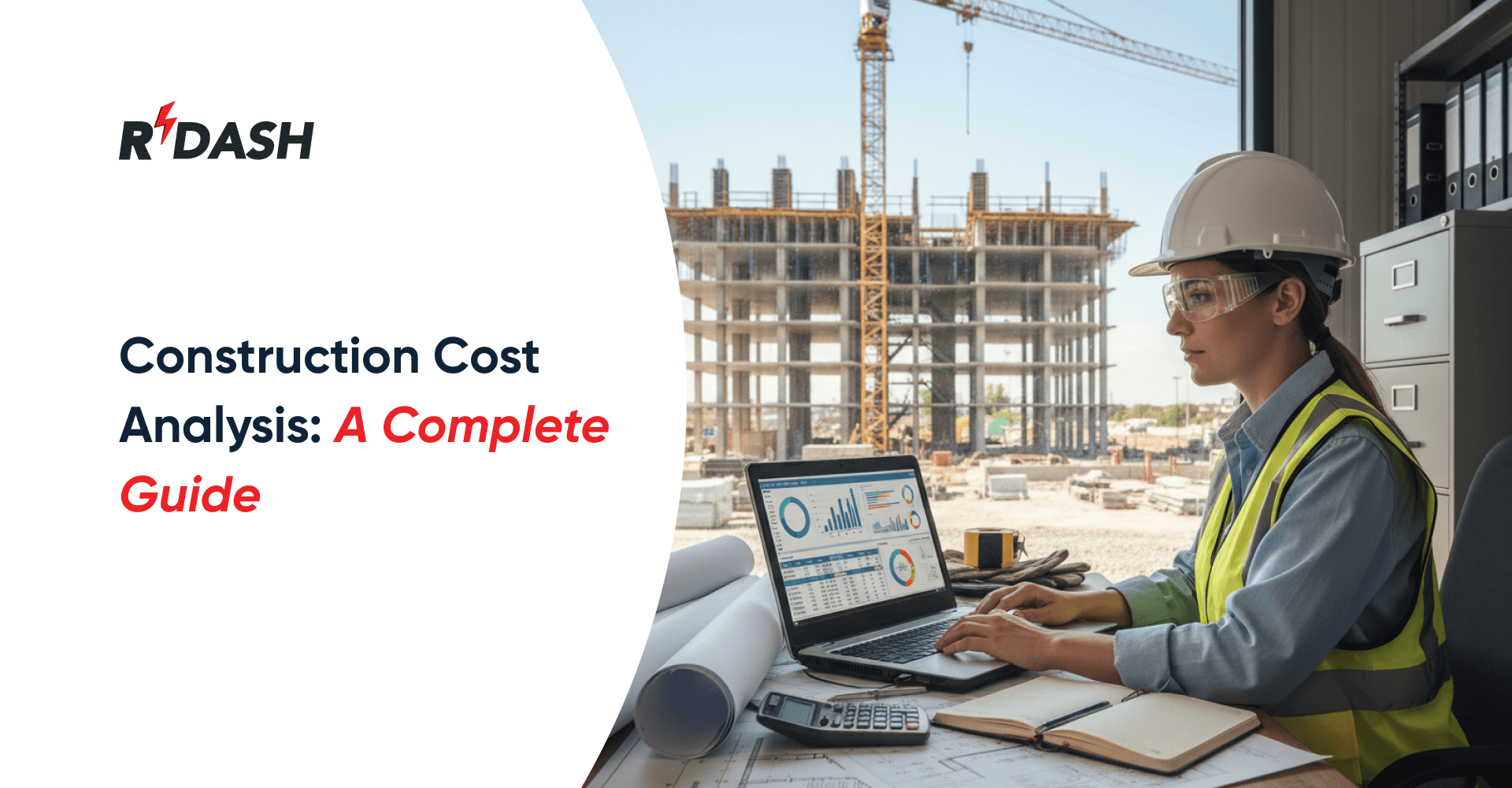Cost control and procurement are critical aspects of construction management that significantly influence the success of a project. Effective cost control ensures that a construction project stays within budget, while efficient procurement support guarantees the timely acquisition of materials and services necessary for project completion. This blog will delve into the importance of cost control and procurement in construction, explore procurement costs and their management, and provide real-world examples. Additionally, we will highlight how our construction management app, RDash, supports these processes, particularly in finance control and cost management.

Understanding Cost Control in Construction
Cost control in construction involves monitoring and managing the expenses associated with a project to ensure they do not exceed the budget. This process is essential for maintaining financial health and profitability and involves tracking costs, comparing them with the budget, and taking corrective actions when necessary.
Key components of cost control in construction include:
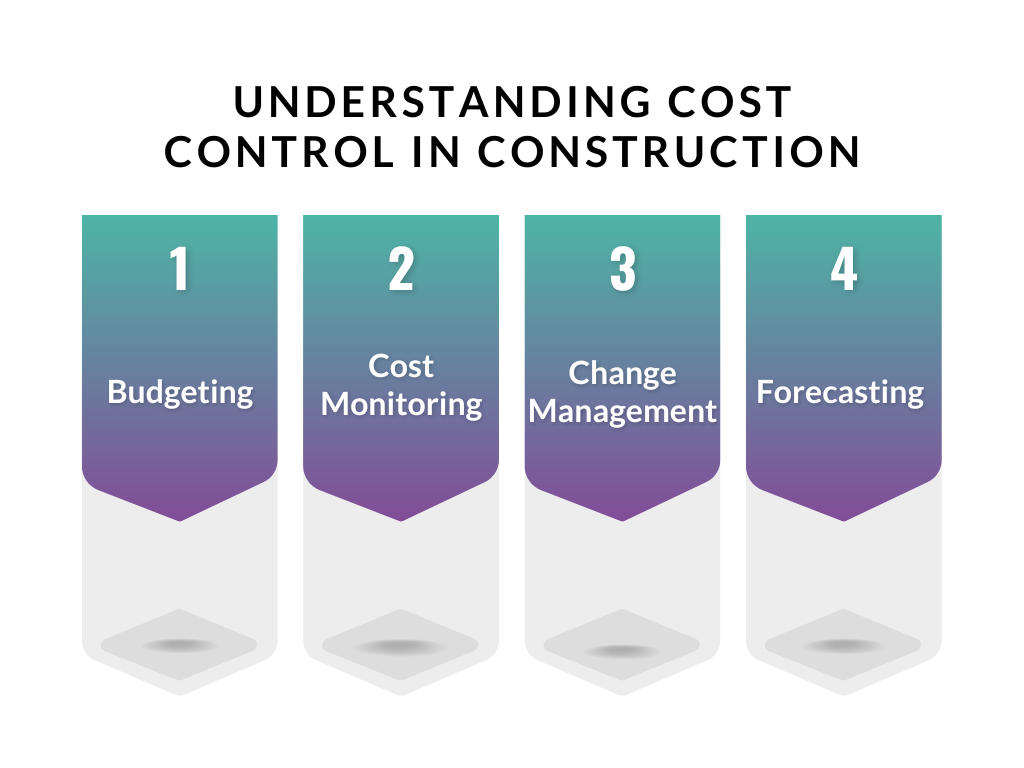
- Budgeting: Establishing a detailed budget at the project’s outset, which includes all estimated costs such as materials, labor, equipment, and overhead.
- Cost Monitoring: Regularly tracking expenses to ensure they align with the budget. This can involve weekly or monthly financial reviews and variance analysis to identify discrepancies between actual and planned costs.
- Change Management: Handling changes in project scope or unforeseen circumstances that impact costs. This requires flexibility and a well-defined change management process to adjust the budget and schedule accordingly.
- Forecasting: Predicting future costs based on current project progress and potential risks. This helps in preparing for unexpected expenses and adjusting the budget in advance.
In construction, the complexity of projects often leads to unexpected changes in scope, material prices, and labor costs, making cost control a dynamic and ongoing process.
Procurement in Construction: Definition and Importance
Procurement in construction refers to acquiring goods and services necessary for a project. It encompasses everything from purchasing raw materials and equipment to contracting labor and subcontractors. The goal of procurement is to obtain these resources at the best possible price, ensuring quality and timely delivery to avoid project delays.
The importance of procurement in construction cannot be overstated. Effective procurement:

- Reduces Costs: By sourcing materials and services competitively, procurement can significantly reduce project costs.
- Ensures Quality: A well-structured procurement process ensures that only high-quality materials and services are selected, which is crucial for the safety and durability of the construction.
- Prevents Delays: Timely procurement prevents delays in the construction schedule, which can lead to cost overruns and penalties.
- Manages Risks: Proper procurement practices manage risks associated with supplier reliability, material availability, and price volatility.
Understanding Procurement Costs
Procurement costs refer to all expenses related to acquiring materials and services necessary for a construction project. These costs can include:

- Material Costs: The direct cost of materials needed for construction, such as concrete, steel, and lumber.
- Logistics and Transportation Costs: Expenses related to transporting materials to the construction site.
- Labor Costs: Costs associated with hiring subcontractors and laborers, including wages, benefits, and insurance.
- Administrative Costs: Overhead costs related to the procurement process, such as staff salaries, software, and office expenses.
- Contingency Costs: Additional funds set aside to cover unexpected expenses, such as price increases or shortages of materials.
Examples of Procurement Costs in Construction
Let’s consider a real-world example of a mid-sized commercial building project:

- Material Costs: $500,000 for concrete, steel, and other building materials.
- Logistics and Transportation: $50,000 for transporting materials to the site.
- Labor Costs: $400,000 for hiring subcontractors and laborers.
- Administrative Costs: $30,000 for procurement staff, software, and office expenses.
- Contingency Costs: $100,000 set aside for unexpected price increases or material shortages.
In this example, procurement costs total $1,080,000, demonstrating the significant impact procurement has on the overall budget.
Cost Control Strategies in Construction
Effective cost control strategies are essential for managing procurement costs and ensuring the project stays within budget. Some strategies include:
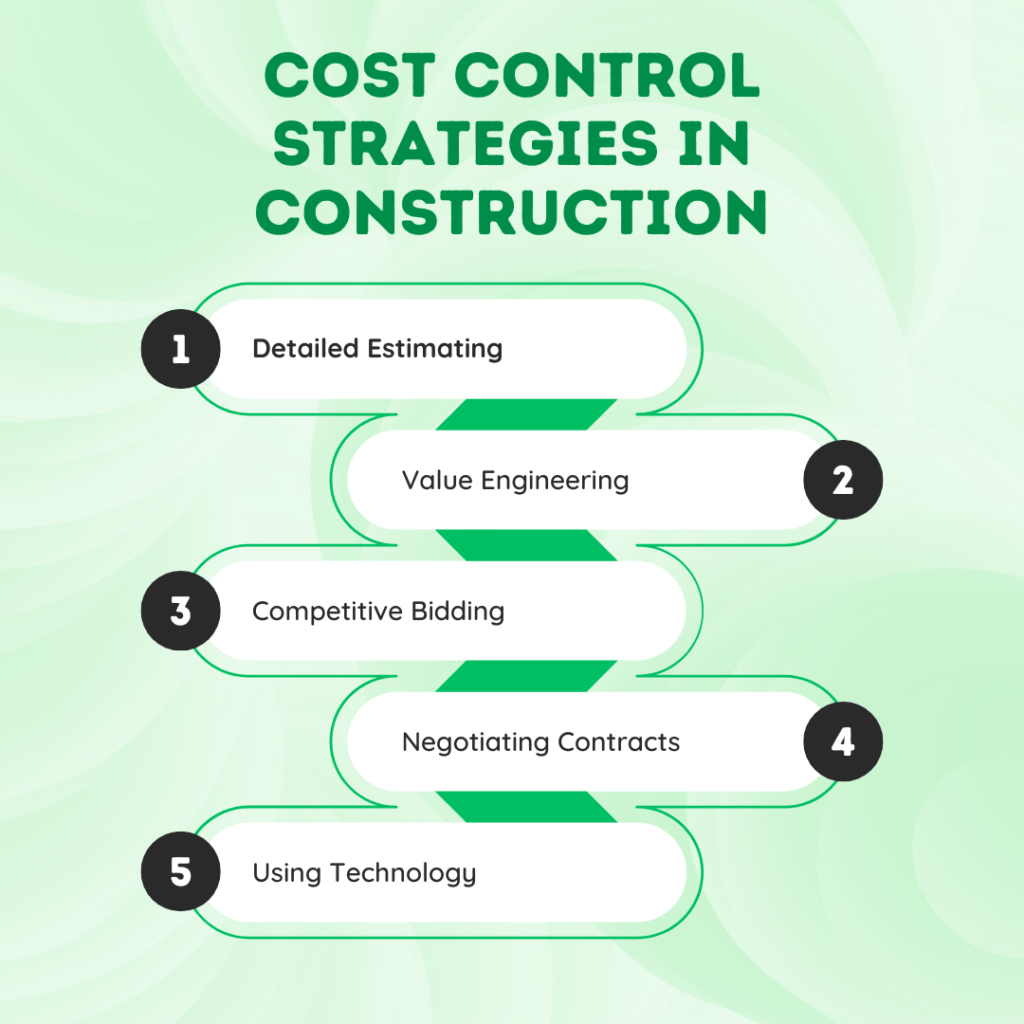
- Detailed Estimating: Preparing a comprehensive estimate that considers all potential costs and scenarios.
- Value Engineering: Analyzing project requirements to find cost-effective solutions that do not compromise quality.
- Competitive Bidding: Soliciting multiple bids for materials and services to ensure the best price and quality.
- Negotiating Contracts: Negotiating favorable terms with suppliers and subcontractors to lock in prices and reduce risks.
- Using Technology: Implementing construction management software like RDash to monitor costs in real-time, streamline procurement processes, and improve financial management.
Cost Control Challenges in Construction
While cost control is crucial, several challenges can complicate the process:

- Unforeseen Circumstances: Changes in project scope, delays, and unforeseen site conditions can lead to increased costs.
- Material Price Fluctuations: Prices for construction materials can fluctuate significantly, affecting the budget.
- Poor Financial Planning: Inadequate planning and budgeting can lead to cost overruns and financial strain.
- Lack of Cost Tracking: Without proper cost tracking systems, it can be difficult to identify where overruns are occurring.
Addressing Cost Control and Procurement Pain Points
Cost control and procurement often face several pain points, including:
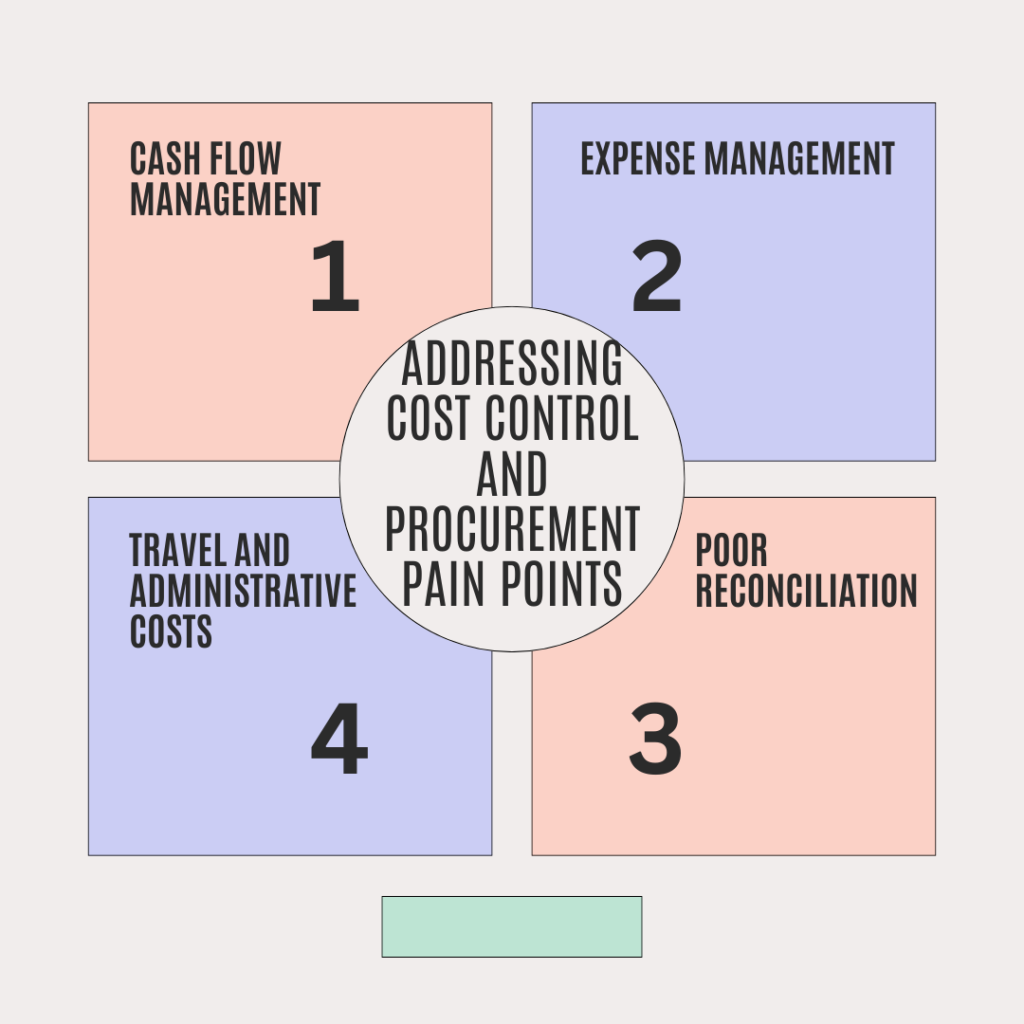
- Cash Flow Management: Many companies fail to control cash flow effectively, especially when payments to vendors are not aligned with client payments. Breaking down the project into multiple suppliers can help manage cash flow better.
- Expense Management: Inadequate systems for handling reimbursements and expense limits can create unpredictability and harm client relationships. Implementing a structured expense management process can mitigate this issue.
- Travel and Administrative Costs: Executive travel costs and other administrative expenses often get misclassified, distorting the true project margins.
- Poor Reconciliation: Inaccurate reconciliation processes create cost overruns and potential corruption. Establishing stringent reconciliation protocols can prevent these issues.
Role of RDash in Cost Control and Procurement
Our construction management app, RDash, plays a vital role in cost control and procurement by offering robust finance management tools. RDash helps construction managers:
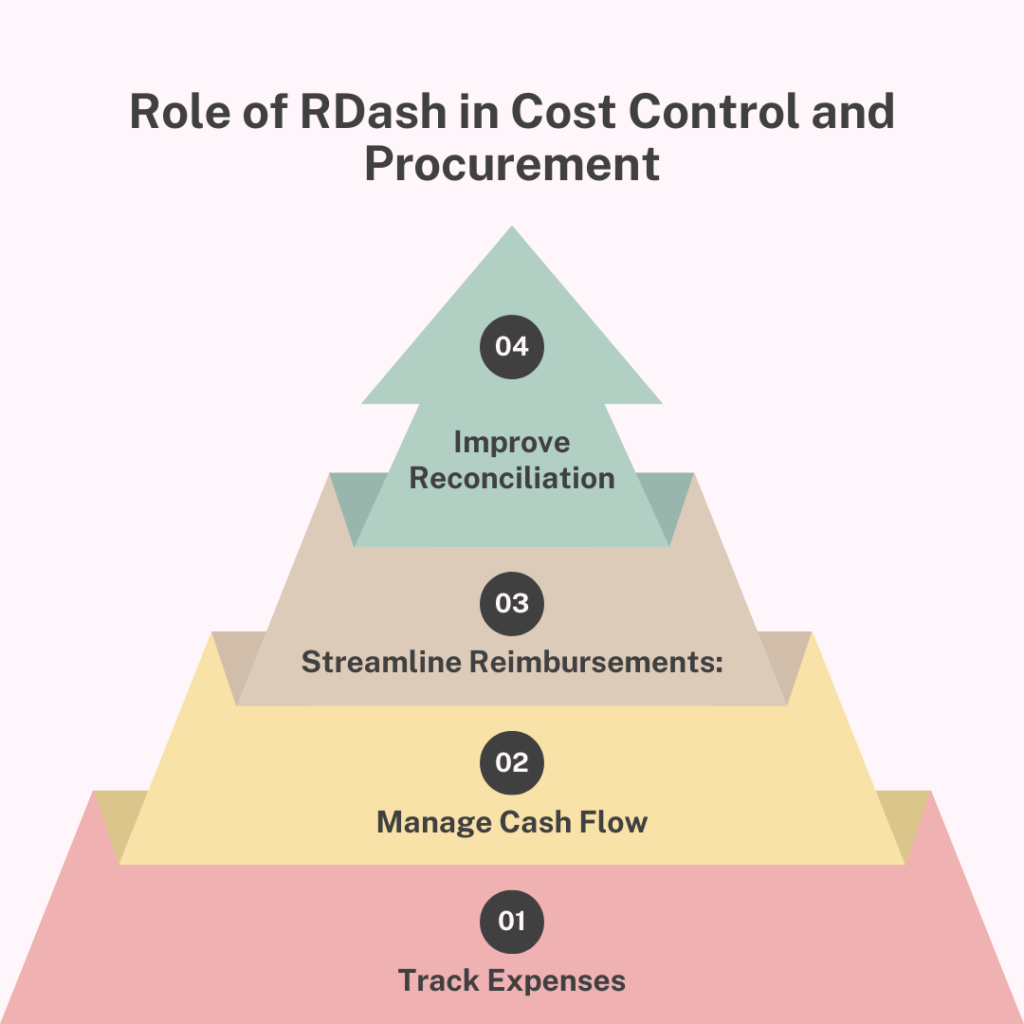
- Track Expenses: Monitor all project-related expenses in real-time, ensuring they align with the budget.
- Manage Cash Flow: Assign project codes and create project wallets to manage cash flow efficiently. For instance, if a project’s cash flow wallet is breached, further payments are halted, and the issue is escalated to the client.
- Streamline Reimbursements: Implement a finance controller mechanism around project reimbursements, with weekly approval cycles if possible.
- Improve Reconciliation: Tag all expenses to specific job IDs and integrate ERP with project management software to enhance reconciliation processes.
RDash also addresses a common issue in construction: the lack of clarity on gross margins. It’s surprising how many contractors are unaware of their true margins due to poor cost tracking and reconciliation practices. By using RDash, companies can avoid such pitfalls, ensuring more precise financial management and improved profitability.
Conclusion
Cost control and procurement are critical to the success of any construction project. Effective management of these aspects not only ensures projects stay within budget but also enhances profitability and client satisfaction. By understanding the intricacies of procurement costs, implementing robust cost control strategies, and leveraging technology like RDash, construction managers can significantly improve their project’s financial health and overall success.
As the construction industry continues to evolve, adopting innovative tools and strategies will be crucial in managing the complexities of cost control and procurement, ultimately leading to more efficient and profitable projects.
By focusing on these core elements and utilizing advanced tools like RDash, construction companies can better navigate the challenges of cost control and procurement, ensuring their projects are not only completed on time and within budget but also maximize profitability.uccess.


